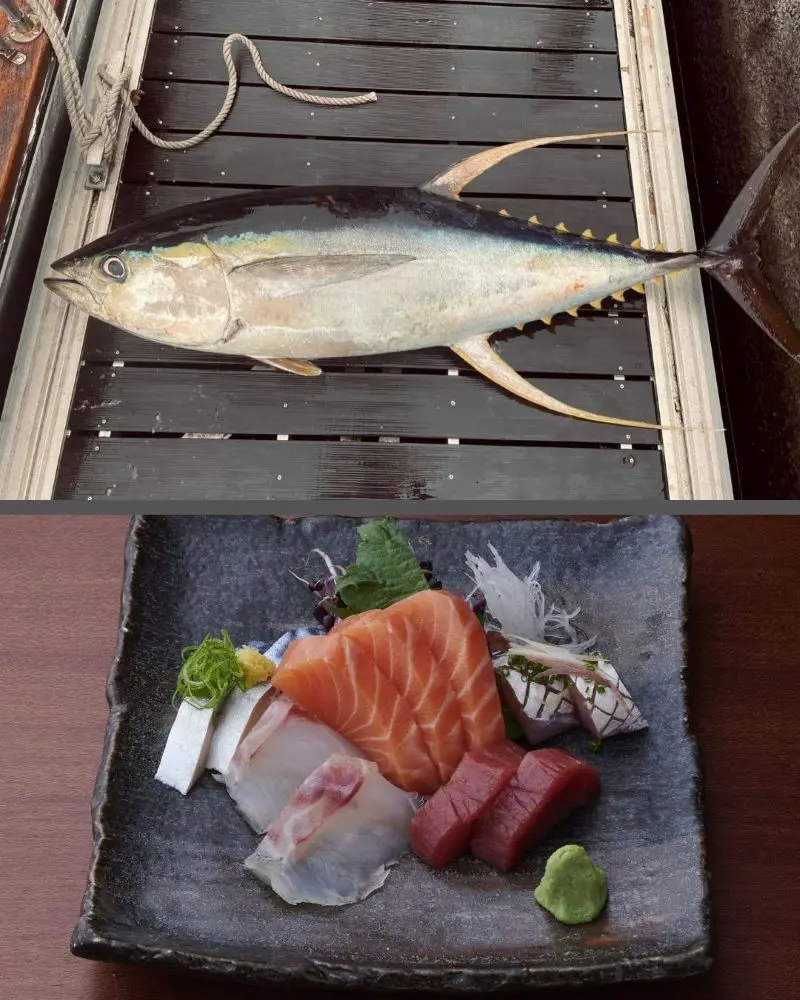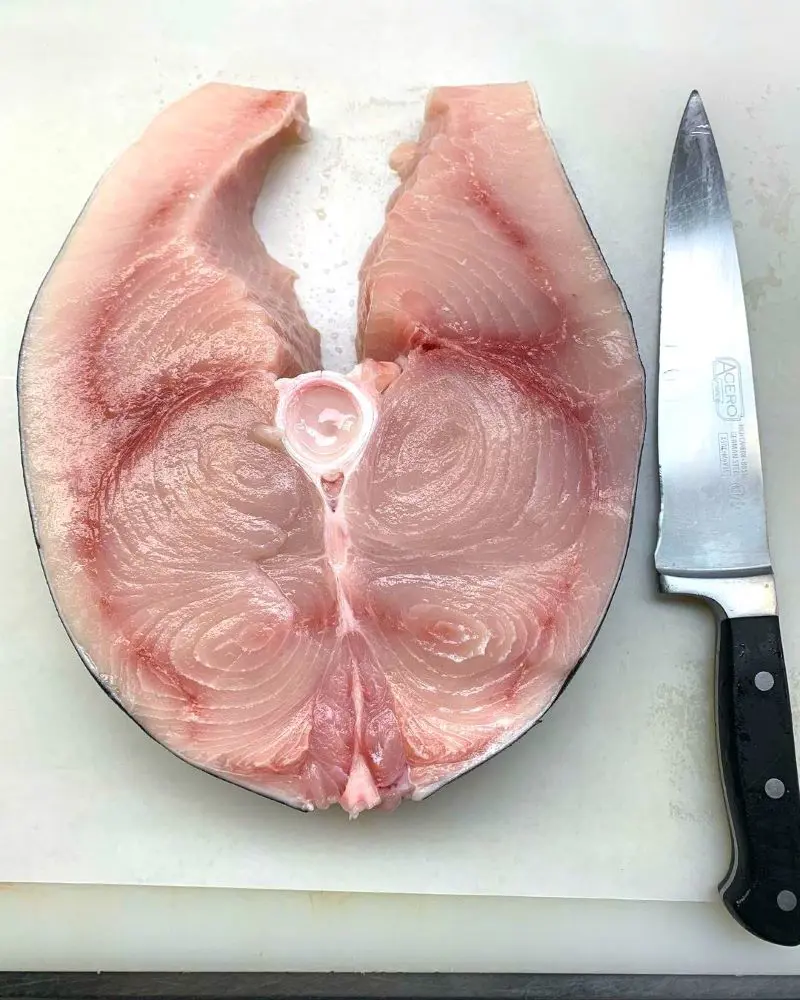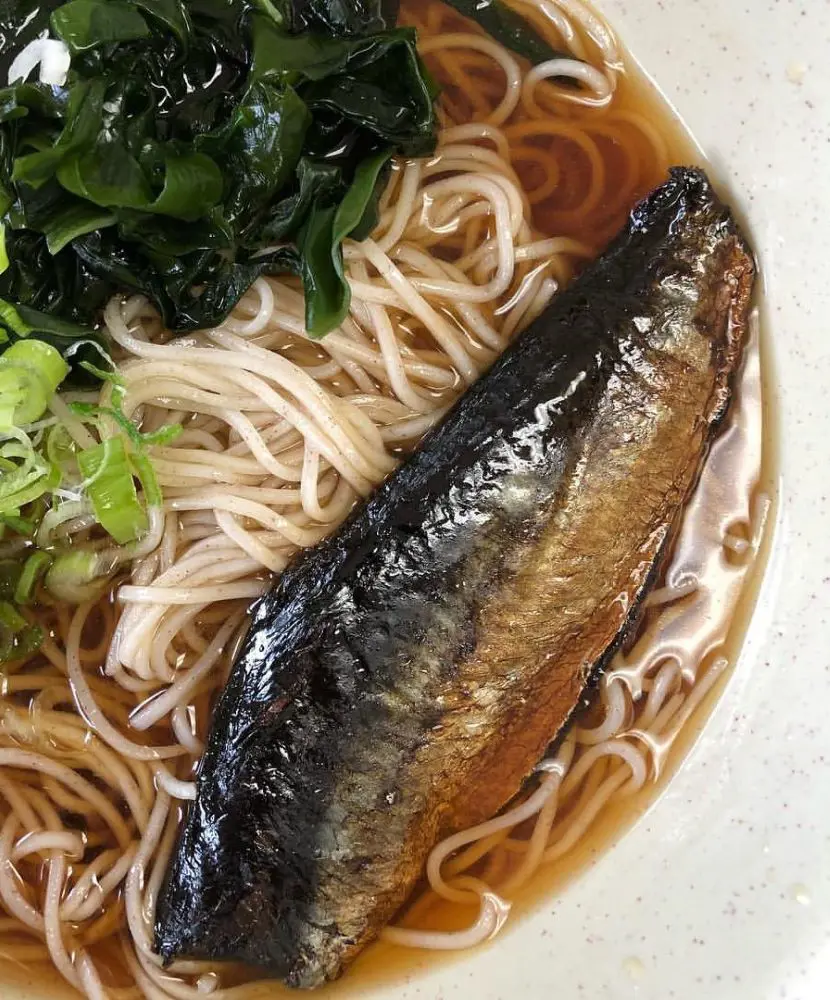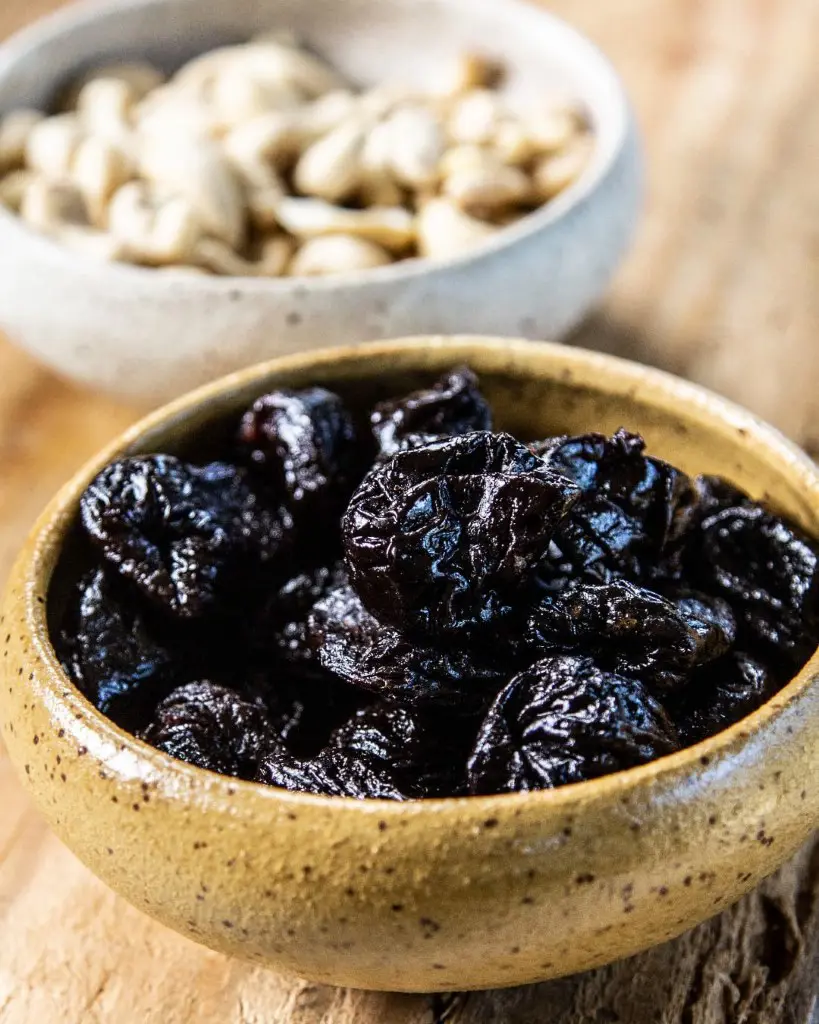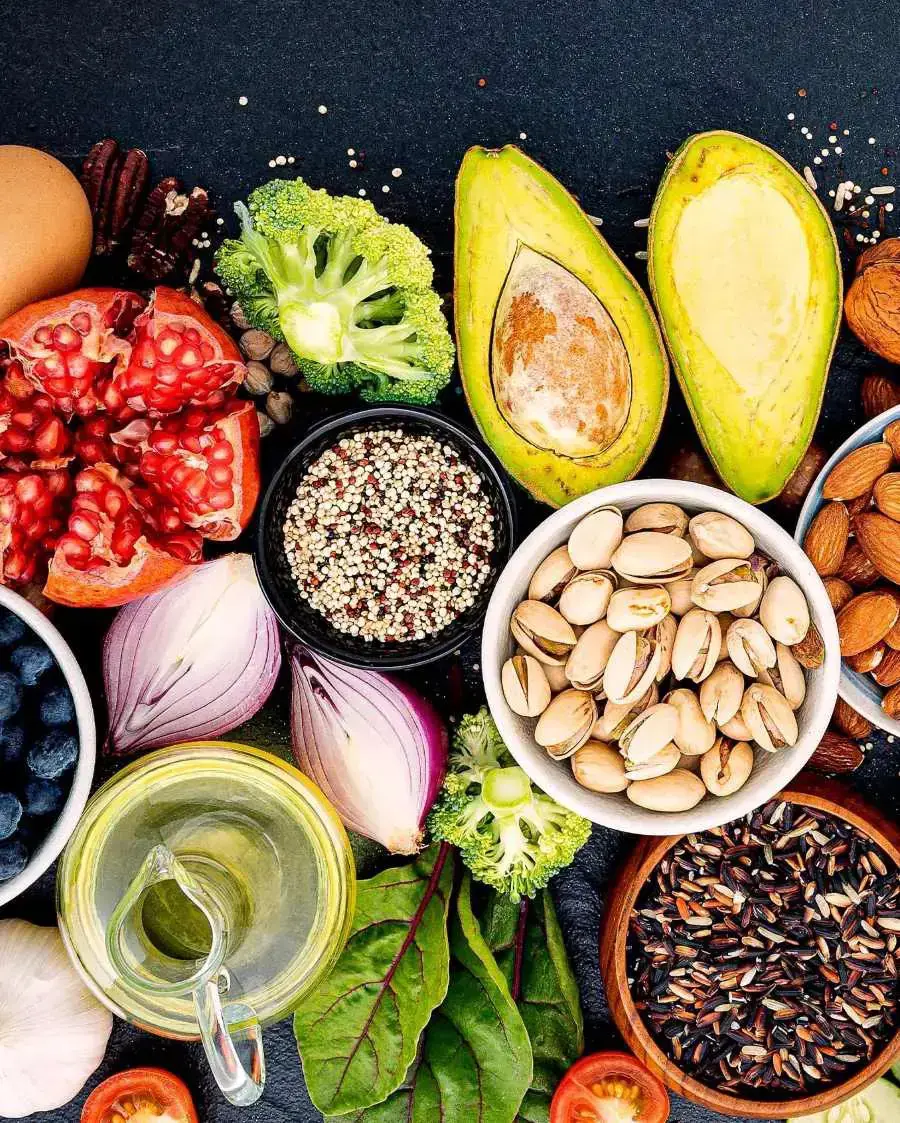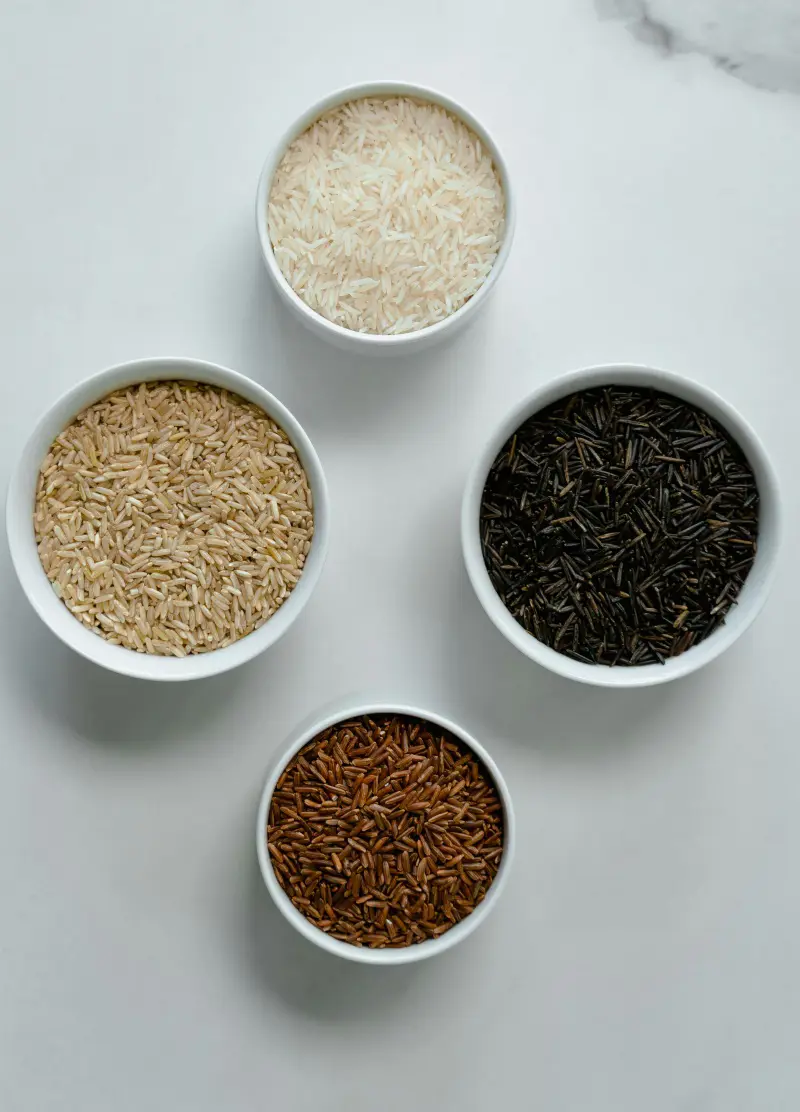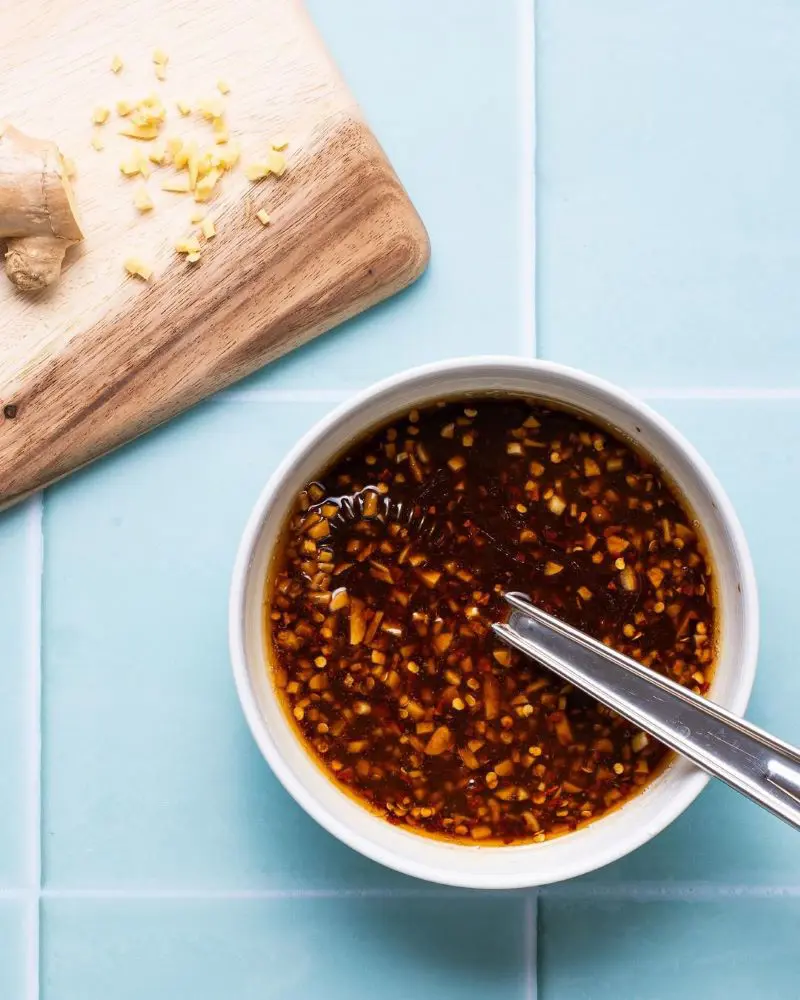1. Yellowfin Tuna
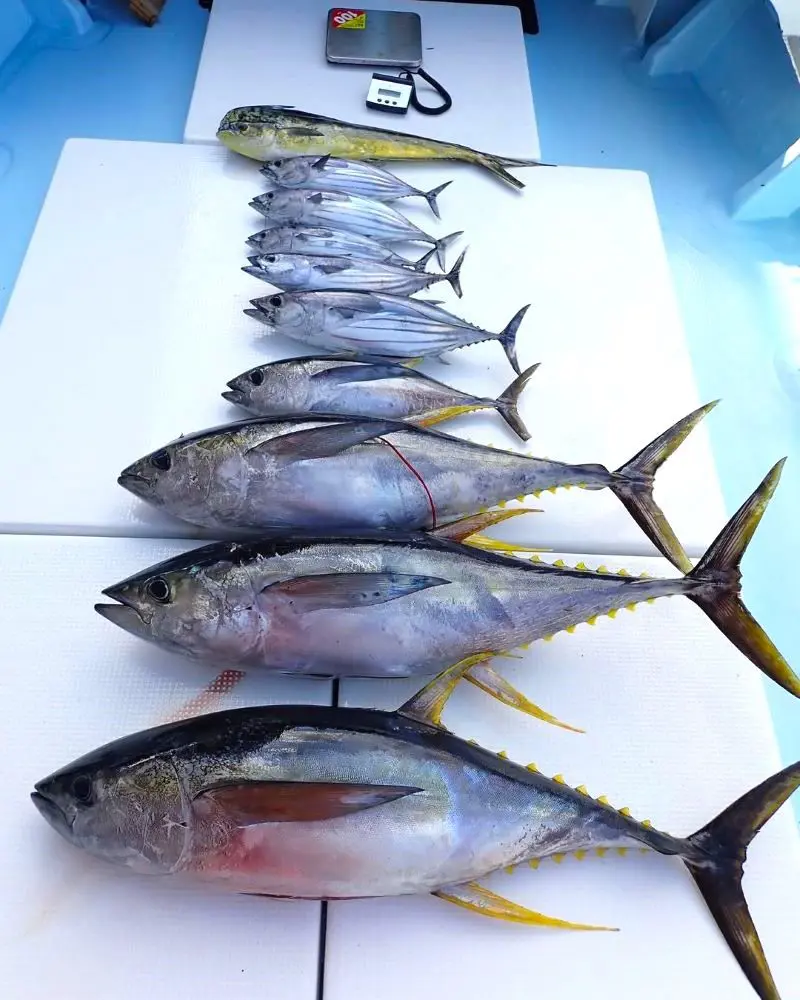
- Protein Content: 30 Grams Per 100 Grams
Yellowfin Tuna is often considered the fish with the most protein. This fish provides protein in the form of essential amino acids. Key proteins found in these tunas include myosin, actin, and tropomyosin, which are crucial for muscle structure and function.
Additionally, yellowfish tuna is an excellent choice for athletes and those engaged in physical activities due to its ability to aid in muscle repair and growth. These amino acids help in maintaining a healthy immune system, supporting metabolic processes, and producing enzymes and hormones.
Besides protein, the tuna variety is also a significant source of omega-3 fatty acids, vitamin B12, and other essential minerals. These nutrients are crucial for red blood cell formation and neurological health.
